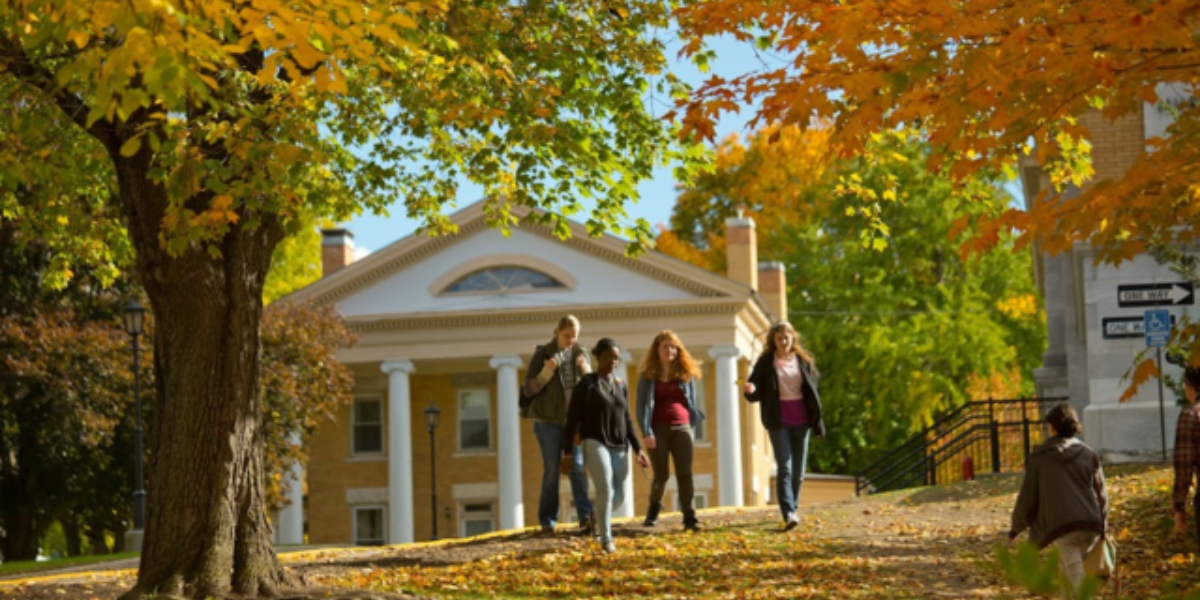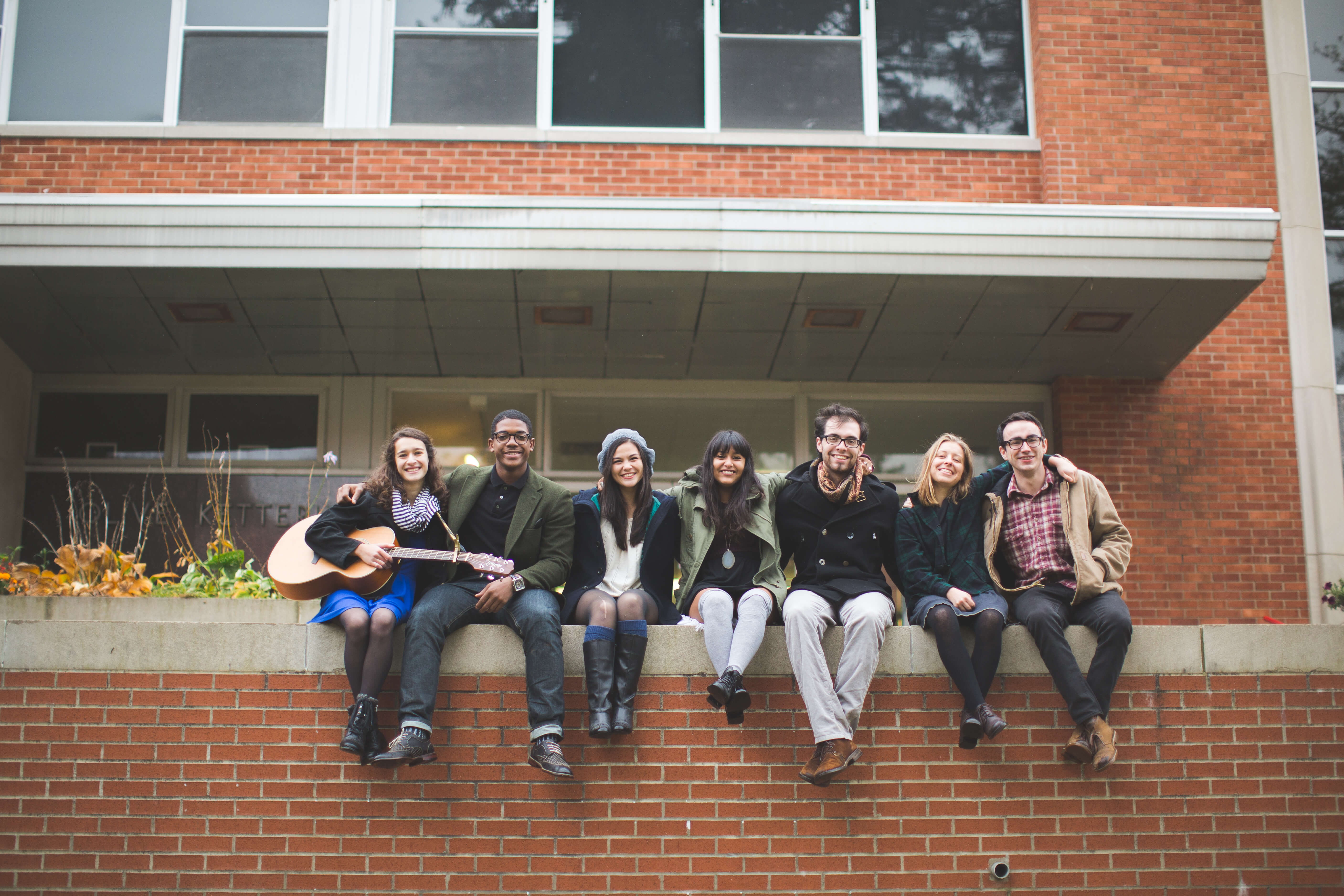Tim Steinebach, a German national, claims he was interested in nearly every aspect of philosophy but never gave thought to applying to a liberal arts college in the United States. Until an admissions representative from New Mexico’s St. John’s College paid a visit to his high school, that is.
“I learned about St. John’s and immediately fell in love with the idea of reading 200 of the greatest books of the West and discussing them without the authoritative interpretations of secondary literature or lecturing professors,” says Steinebach, who received her degree in May 2023.

The only academic program offered at St. John’s, which has campuses in Sante Fe and Annapolis, Maryland, is Great Books.
In addition to offering four-year degrees with a focus on the humanities, arts, and natural and social sciences, liberal arts institutions also give their students the chance to pursue a wide range of extracurricular activities.
This educational approach is native to the United States; it was developed there. While liberal arts and sciences education is beginning to spread to other nations, we have a long history of providing it,” says Amy E. Markham, director of international admission at Massachusetts’ Mount Holyoke College. According to her, the institution presently enrolls 493 foreign students.
Less than 200 private liberal arts colleges exist in the United States, including Mount Holyoke, which attracts international students similar to St. John’s. Because of their smaller student bodies, these universities frequently attract and welcome overseas students more than others.
Four experiences that international students might anticipate from a liberal arts degree in the United States are as follows:
International students who attend liberal arts colleges might anticipate receiving a more comprehensive education than at certain universities, in addition to becoming scholars in their chosen fields.
“We often see international students who were sorted into an academic track early on, either of their own volition or someone else’s,” says Amanda Barnes Stevens, St. John’s director of international recruitment admissions. “The true gift of a liberal arts education is that it asks students to study widely, often outside of their intended discipline and comfort zone.”
According to Steinebach, the Great Books curriculum helped him learn a great deal about the nature of the universe and the human condition.
“Liberal arts are usually thought of as being extremely broad and covering a wide range of interests. However, St. John’s offers a more limited and focused selection of whatever interests you, according to Steinebach.
Generally, liberal arts universities provide a range of majors. A liberal arts education, on the other hand, enables overseas students who are coming from a system where they must choose a specialization from the first semester of college to explore and mix several subjects of study.
More Interaction With Faculty
Liberal arts universities typically feature smaller class sizes, which provide students better access to professors, even though international students may not be used to having direct interactions with their teachers back home.
“The close one-on-one interactions students have with faculty and peers, both inside and outside the classroom, helps build strong relationships that drive success,” says Andrew Woolsey, dean of enrollment services at Soka University of America, a 7-to-1 student-to-faculty ratio university located in California.
Foreign students frequently acquire a solid foundation in a variety of multidisciplinary courses “taught by faculty committed to their success rather than just focusing narrowly on research,” according to Woolsey.
International applicants thinking about liberal arts universities should also be ready for a classroom setting that requires more engagement from their peers.
“For international students who have spent the entirety of their time in a classroom with forward-facing desks and an instructor lecturing from a blackboard, being thrust into a discussion-based classroom where they are expected to contribute to the conversation can be a daunting prospect,” says Stevens. “However, they’re often surprised at how quickly they pick up on the ebb and flow of these academic discussions.”
Emphasis on Critical Thinking Skills
Through a liberal arts education in the U.S., international students can expect to sharpen skills like problem-solving and critical thinking, focusing on how to think rather than what to think.
“In many other countries, the style of education is very knowledge- and fact-based,” Markham says. “What students are getting here balances knowledge acquisition with the ability to collaborate, problem-solve and innovate. This flexible, critical thinking emphasized by the liberal arts and sciences allows students to thrive and to adapt future unknowns.”
Another benefit for international students, Woolsey says, is that students at liberal arts colleges often are required “to see the connections across various disciplines and in the world around them, helping to enhance their creativity, communication, critical thinking and leadership skills.”
Not having strong soft skills, such as communication, critical thinking and problem solving, may hurt job prospects, as hiring managers are focusing their recruitment more on human skills. A 2019 LinkedIn research report on global talent trends found that 89% of new hires don’t work out due to a lack of soft skills.
“As active participants in rigorous, discussion-based classes, student-run organizations, athletic teams and arts ensembles – even the classic late-night dorm hangout – students learn how to engage, to ask good questions, to be respectful listeners and to think and write critically,” says Jonathan C. Edwards, director of international admission at Grinnell College in Iowa. “These habits of mind will serve them well in any professional field and in their life and relationships in general.”
Learning Outside the Classroom
At liberal arts colleges, international students can also gain experience through hands-on field trips that can prove useful for future career objectives and opportunities in the U.S. or in their home country.
At Principia College in Illinois, for example, the classroom experience could take place at a stream, theater, museum, observatory or national park, according to the school’s website. Most geology classes at Pomona College in California take field trips to geological settings to complement classroom and laboratory experiences, such as day trips to local canyons and mountains and longer trips around California and Utah, per the school’s website.
“Many international students who attend a liberal arts college leave well-rounded because of the high level of cross-cultural engagement they experience through participation in mentoring programs, curricular practical training, study abroad, athletics, residential life and student activities,” Woolsey says.
The learning doesn’t stop after graduation. Stevens says students embark on a wide range of careers and notes that 70% to 80% of St. John’s graduates pursue advanced degrees at some point because they choose careers, such as law and medicine, that require them – “not because they finish at St. John’s and find themselves unemployable.”
The school’s international students who pursue advanced degrees have sought graduate schools in the U.S. and in their home countries, she says. Stevens also notes that, according to a Georgetown University Center on Education and the Workforce study in 2020, liberal arts college graduates on average make more money in the long run than those who studied at other types of colleges.
“A student who decides to pursue a liberal arts education in the States is in for an experience unlike any other,” Stevens says.



